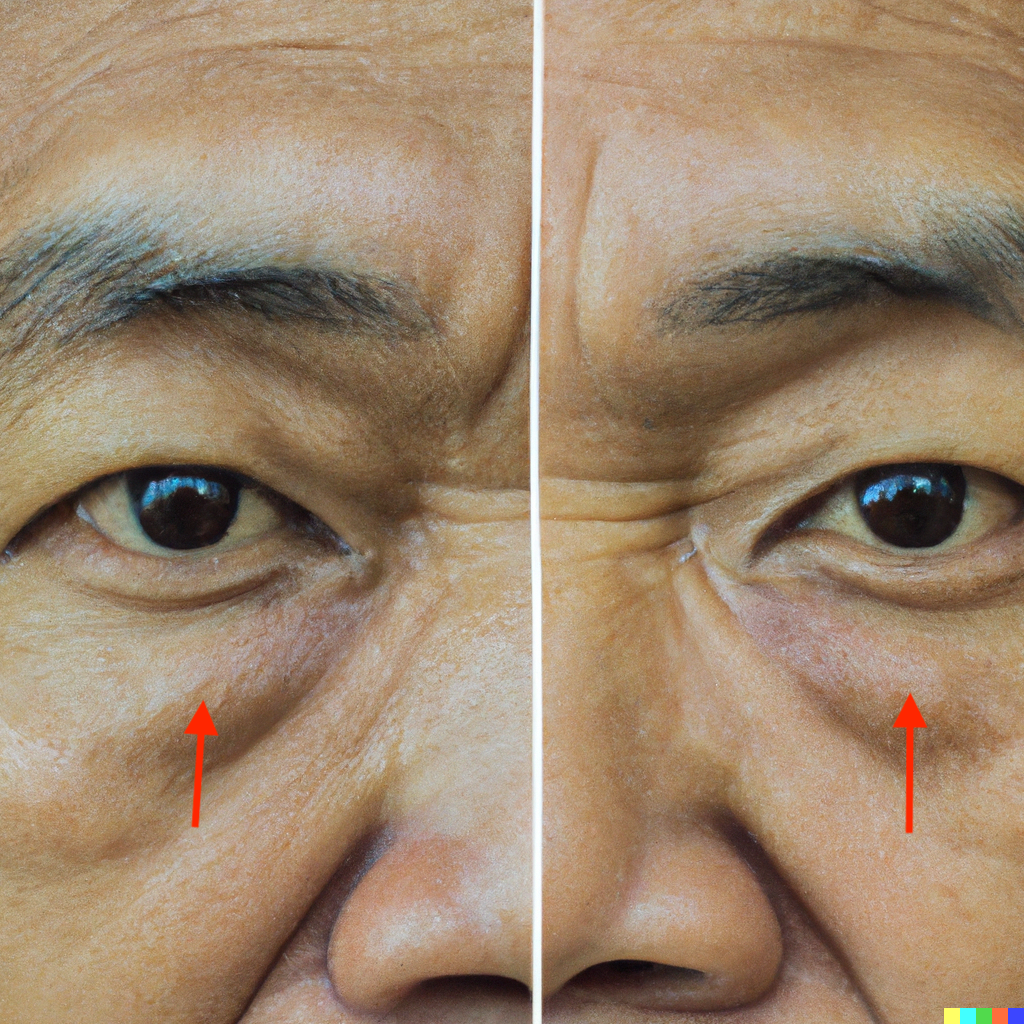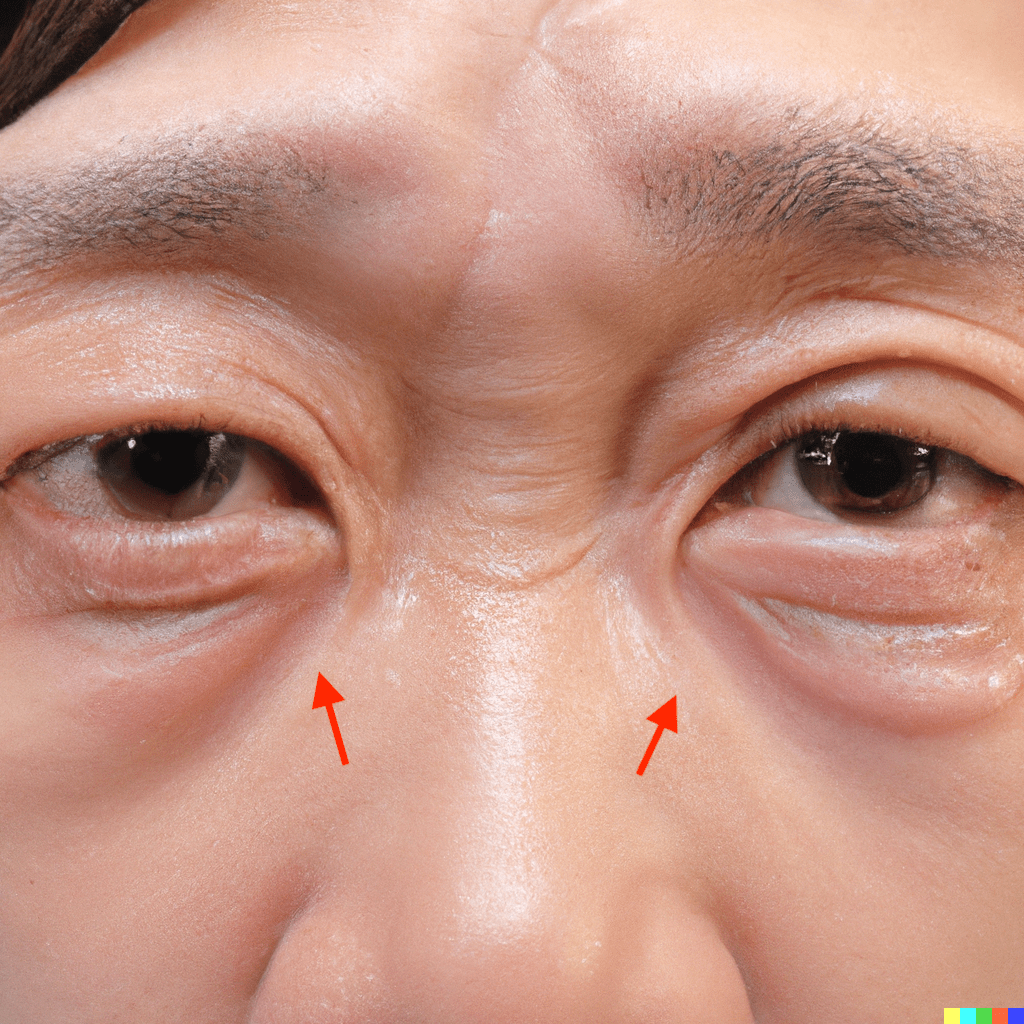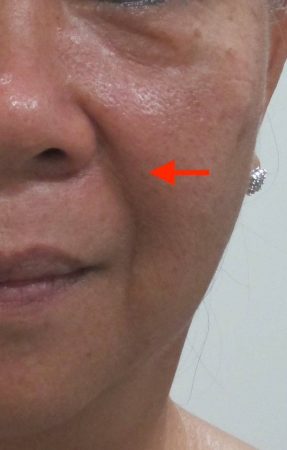Eye Bag Surgery

What causes eye bags?
Each eye socket contains fat that cushions the eyeball. With age, the fat bulges out of the sockets (pseudo-herniation) and creates the appearance of eye bags. The old method of dealing with this, was to simply excise the fat surgically.
There are advertisements for lasers and heat-based machines that claim to be able to dissolve fat from the eye bags. The risk of these methods is accidental burns to the eyeball. Heat dissipates. That is difficult to control precisely.
Even if all the fat is really completely burnt off, the procedure does not correct the tear through deformity.
Tear Trough Deformity
As one ages, the soft tissue of the cheek sags to a lower position. The bony socket of the eye is now visible because there is no soft tissue over the bone. This hollow appearance is called the tear trough deformity (red arrows). Just removing the fat from the eye bags does not lift the sagging cheek back up to fill up the tear trough.
Even if it is possible to burn off all the fat in the eye bag without damaging the eye, there will still be a visible tear trough deformity. The next decision to make is whether to camouflage the groove or to lift the cheek back to its original position.

"Scarless" Lower Lid Blepharoplasty
One of the easiest ways to sell an operation is to claim that it leaves no scar. One example is the Trans-conjunctival Blepharoplasty. The incision is made on the inside of the eye lid. The fat of the eye bag is pulled down over the cheek to camouflage the tear trough instead of being removed. This approach was very popular when it was first described. With experience, the problems began to show. Here is a Youtube video that describes the problems.
This procedure is usually done under light sedation in the clinic. Some patients feel uncomfortable during the procedure because the cut is INSIDE the eyelid. It is a short incision in a sensitive location. The surgeon has to struggle through as small hole. This is why the results are sometimes less than ideal.
External Incision with no scar?
If the aim is to avoid a visible external scar, there is an alternative. In the transcutaneous or sub-ciliary approach, the incision is 2mm below the eyelash margin, on the outside of the eye lid. Once healed, this incision is as good as invisible. It is more comfortable for the patient during the procedure, because the incision is on the outside.
The aim of the transnconjunctival approach (with fat re-positioning) is to camouflage the tear trough by filling it with fat. The external approach and cheek lift, aims to remove excess skin and return the sagging cheek tissue to its original position.

Eye bag removal
This is the typical appearance of someone with eye bags. The skin of the lower lid is loose and wrinkled. Below that, the sagging cheeks creates prominent “laugh lines” (red arrow). Pulling down the fat from the eye bag to fill up the tear trough, gives the upper cheek a puffy appearance.
It is, in effect, spreading the fat onto the front of the face.
Even if the tear trough is successfully filled, there is still the sagging cheek tissue below that, and the laugh lines (nasolabial folds) remain unchanged.
If a sub-ciliary incision is used instead, the loose skin can be removed. The sagging cheek tissue can be lifted back up to its original position just below the eye socket. Rather than filling depressions with fat, it is restoring the cheek tissues to its original position in youth.
